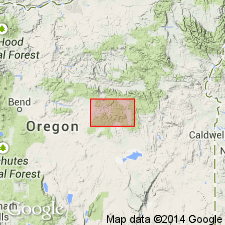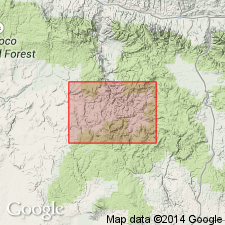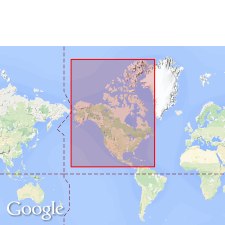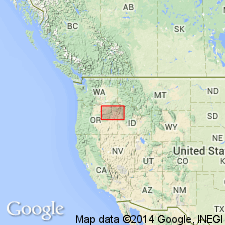
- Usage in publication:
-
- Trowbridge shale
- Modifications:
-
- Named
- Dominant lithology:
-
- Shale
- AAPG geologic province:
-
- Snake River basin
Summary:
Named for H.H. Trowbridge Ranch at mouth of Rosebud Creek, South Fork Valley, Crook County, Oregon. Type area trends northeast across South Fork Valley along Mowich anticline where beds dip steeply to southeast, Grant County, Oregon. Consists of black shale with large concretions. Thickness is about 4000 feet. Underlies Lonesome formation (new); overlies Snowshoe formation (new). Base is difficult to determine. Early Late Jurassic age for lower and middle parts of Trowbridge shale is demonstrated by macrocephalitid ammonites found in Flat Creek Canyon immediately north of Snow Mountain.
Source: GNU records (USGS DDS-6; Menlo GNULEX).

- Usage in publication:
-
- Trowbridge Formation
- Modifications:
-
- Revised
- Redescribed
- AAPG geologic province:
-
- Snake River basin
Summary:
Trowbridge Shale of Lupher (1941) referred to as Trowbridge Formation. Divided into members due to presence of resistant volcaniclastic strata in middle of formation. Members are (ascending): Rosebud (massive black and green mudstone), Officer (massive black and green mudstone and intercalated volcaniclastic rocks), and Magill (massive black mudstone with sparse and thin intercalated beds of calcareous sandstone and limestone).
Source: Modified from GNU records (USGS DDS-6; Menlo GNULEX).

- Usage in publication:
-
- Trowbridge Shale*
- Modifications:
-
- Adopted
- Biostratigraphic dating
- Age modified
- AAPG geologic province:
-
- Blue Mountains province
Summary:
Characteristic fossils include LILLOETTIA BUCKMANI, KEPPLERITES, XENOCEPHALITES of early Callovian (Middle Jurassic) age.
Source: GNU records (USGS DDS-6; Menlo GNULEX).

- Usage in publication:
-
- Trowbridge Shale*
- Modifications:
-
- Biostratigraphic dating
- Age modified
- AAPG geologic province:
-
- Blue Mountains province
Summary:
In Delintment Lake area, association of PARAPATOCERAS and XENOCEPHALITES in basal beds of Trowbridge Shale shows beds are either of late Bathonian or early Callovian age.
Source: GNU records (USGS DDS-6; Menlo GNULEX).
For more information, please contact Nancy Stamm, Geologic Names Committee Secretary.
Asterisk (*) indicates published by U.S. Geological Survey authors.
"No current usage" (†) implies that a name has been abandoned or has fallen into disuse. Former usage and, if known, replacement name given in parentheses ( ).
Slash (/) indicates name conflicts with nomenclatural guidelines (CSN, 1933; ACSN, 1961, 1970; NACSN, 1983, 2005, 2021). May be explained within brackets ([ ]).

